Related Research Articles
The year 1901 in film involved some significant events.

The Lady of the Lake is a name or a title used by several either fairy or fairy-like but human enchantresses in the Matter of Britain, the body of medieval literature and mythology associated with the legend of King Arthur. She plays several important roles in many stories, including providing Arthur with the sword Excalibur, eliminating Merlin, raising Lancelot after the death of his father, and helping to take the dying Arthur to Avalon. Different sorceresses known as the Lady of the Lake appear concurrently as separate characters in some versions of the legend since at least the Post-Vulgate Cycle and consequently the seminal Le Morte d'Arthur, with the latter describing them as a hierarchical group, while some texts also give this title to either Morgan or her sister.

In fairy tales, a fairy godmother is a fairy with magical powers who acts as a mentor or parent to someone, in the role that an actual godparent was expected to play in many societies. In Perrault's Cinderella, he concludes the tale with the moral that no personal advantages will suffice without proper connections.

Merlin is a 1998 two-part television miniseries starring Sam Neill as Merlin, recounting the wizard's life in the mythic history of Britain. Loosely adapted from the legendary tales of Camelot, the plot adds the antagonistic Queen Mab and expands Merlin's backstory before the birth of King Arthur.

In mythology, legend or fiction, a magic sword is a sword with magical powers or other supernatural qualities. Renowned swords appear in the folklore of every nation that used swords.
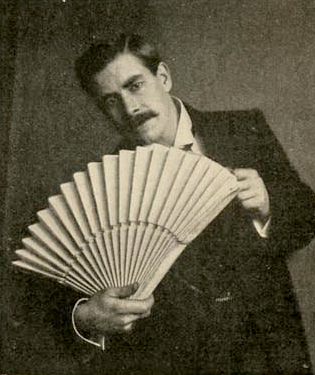
David Devant was an English magician, shadowgraphist and film exhibitor. He was born David Wighton in Holloway, London. He is regarded by magicians as a consummate exponent of suave and witty presentation of stage illusion. According to magic historian Jim Steinmeyer, Devant was “England’s greatest magician—arguably the greatest magician of the 20th Century”.

The Magic Sword is a 1962 American adventure fantasy film directed by Bert I. Gordon that is loosely based on the medieval legend of Saint George and the Dragon.
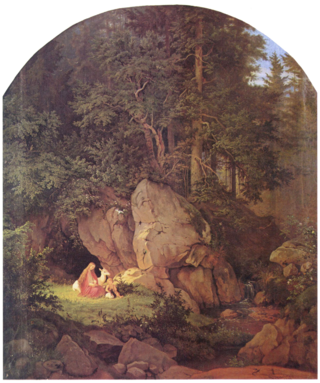
In folklore and fantasy, an enchanted forest is a forest under, or containing, enchantments. Such forests are described in the oldest folklore from regions where forests are common, and occur throughout the centuries to modern works of fantasy. They represent places unknown to the characters, and situations of liminality and transformation. The forest can feature as a place of threatening danger, or one of refuge, or a chance at adventure.

Jack the Giant Killer is a 1962 American heroic fantasy adventure film starring Kerwin Mathews in a fairy tale story about a young man who defends a princess against a sorcerer's giants and demons.

Marie-Georges-Jean Méliès was a French magician, actor, and film director. He led many technical and narrative developments in the early days of cinema.

Scrooge, or, Marley's Ghost is a 1901 British silent trick film directed by Walter R. Booth, featuring the miserly Ebenezer Scrooge confronted by Jacob Marley's ghost and given visions of Christmas past, present, and future. It is the earliest film adaptation of Charles Dickens's 1843 novella A Christmas Carol.

Walter Robert Booth was a British magician and early pioneer of British film. Collaborating with Robert W. Paul and then Charles Urban mostly on "trick" films, he pioneered techniques that led to what has been described as the first British animated film, The Hand of the Artist (1906). Booth is also notable for making the earliest film adaptation of A Christmas Carol with the silent film Scrooge, or, Marley's Ghost (1901).

The Waif and the Wizard, also entitled The Home Made Happy, is a 1901 British silent comic trick film, directed by Walter R. Booth, featuring a magician using his magic to aid an ailing girl at the request of her brother. The film, "is rather less elaborate in terms of special effects than the other films that W.R. Booth and R.W. Paul made the same year," but according to Michael Brooke of BFI Screenonline, "provides an excellent illustration of how effects used sparingly can often have more impact, especially when set in a suitable emotional context."
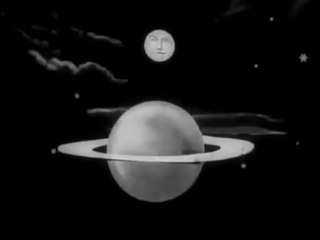
The '?' Motorist is a 1906 British silent comedy trick film, commonly called "The Mad Motorist" or "Questionmark Motorist" and directed by Walter R. Booth. Released in October 1906, the trick film is "one of the last films that W.R. Booth made for the producer-inventor R.W. Paul," and, according to Michael Brooke of BFI Screenonline, "looks forward to the more elaborate fantasies that Booth would make for Charles Urban between 1907 and 1911, as well as drawing on a wide range of the visual tricks that Booth had developed over the preceding half-decade."

Willie's Magic Wand is a 1907 British short silent comedy film, directed by Walter R. Booth, featuring a young boy terrorising the household with his father's magic wand. Similar to "earlier trick films The Haunted Curiosity Shop and Undressing Extraordinary ", this is, according to Michael Brooke of BFI Screenonline, "essentially a series of [loosely linked] special-effects set pieces", but "the print in the National Film and Television Archive is incomplete, omitting amongst other things a come-uppance where Willie is punished for his misdemeanours by being turned into a girl, thus depriving him of more than one magic wand". A clip from the film is featured in Paul Merton's interactive guide to early British silent comedy How They Laughed on the BFI website.
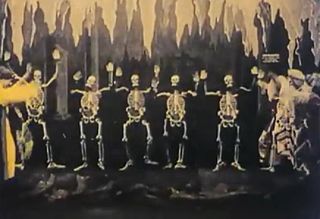
The Palace of the Arabian Nights is a 1905 silent fantasy film directed by Georges Méliès. The film, inspired by the One Thousand and One Nights, follows the adventures of a prince whose bravery and devotion are tested in a magical quest to win the hand of his beloved.
Le Chevalier des Neiges, known in English as The Knight of the Snows or The Knight of the Snow, is a 1912 French silent trick film directed by Georges Méliès.
"Ill-Boding Patterns" is the thirteenth episode of the sixth season of the American fantasy drama series Once Upon a Time, which aired on March 19, 2017. In this episode, Gold must find a way to stop Gideon from going dark as he prepares to kill Emma, while Hook must find a way to hide the truth about Robert from her, and Wish Realm Robin seeks an ally to help escape Storybrooke. In the past, the legend of Beowulf and how he crossed paths with Rumplestiltskin is revealed.
The Witch is a 1906 French short silent film by Georges Méliès. The film is named for a witch, Carabosse, who tells a poor troubadour that he is destined to rescue a damsel in distress, but demands a high price for a magic charm to help the troubadour in his quest. When the troubadour cheats the witch to obtain the magic charm, she sets out in pursuit of him, and puts various obstacles in his way before finally being vanquished by forces of good.
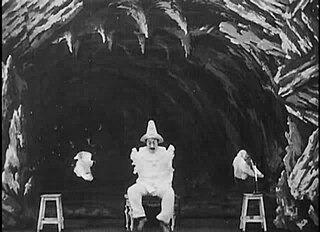
Dislocation Extraordinary, also known as Extraordinary Illusions, is a 1901 French silent trick film by Georges Méliès. It was sold by Méliès's Star Film Company and is numbered 335–336 in its catalogues.
References
- ↑ Brooke, Michael. "Magic Sword - A Mediaeval Mystery, The (1901)". BFI Screenonline Database. Retrieved 24 April 2011.
- ↑ Marina Dahlquist; Doron Galili; Jan Olsson; Valentine Robert (2018). Corporeality in Early Cinema: Viscera, Skin, and Physical Form. Indiana University Press. ISBN 978-0-253-03366-6.
- ↑ Magical Sword (1901) , retrieved 11 November 2018
- Ettleman, Tristan (26 March 2017). "Magical Sword Is a Perfect Representation of the Trick Film Genre of the 1900s". Medium. Retrieved 11 November 2018.
- Magical Sword , retrieved 11 November 2018